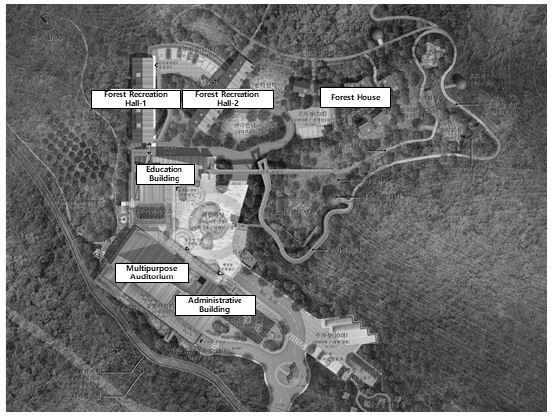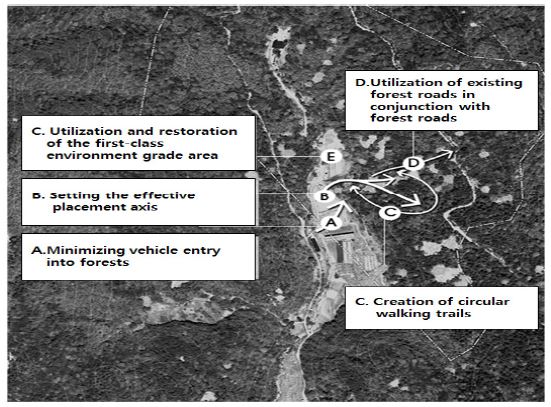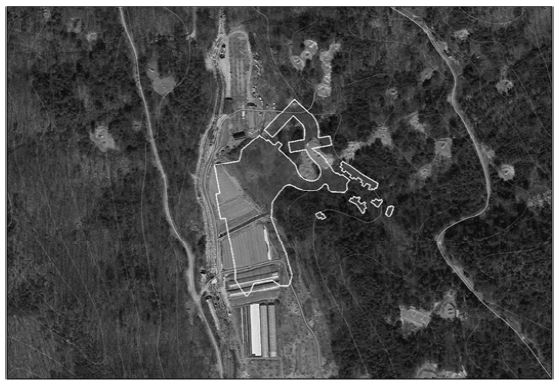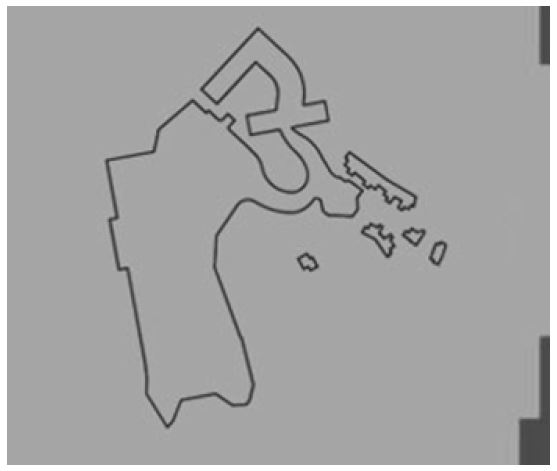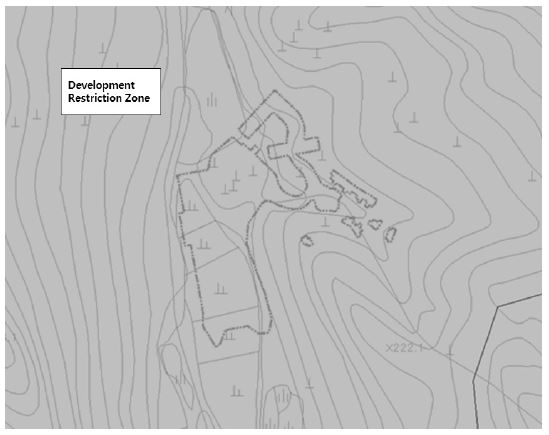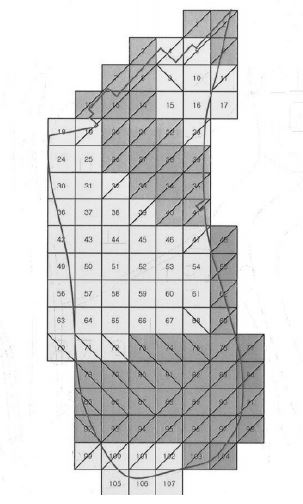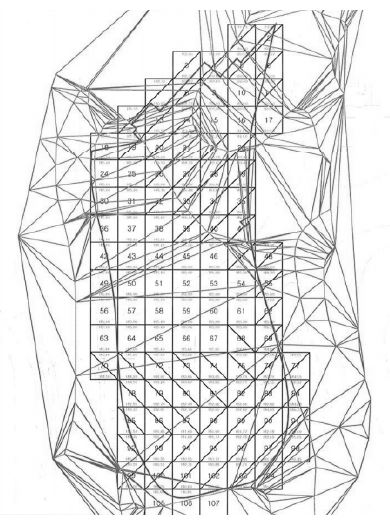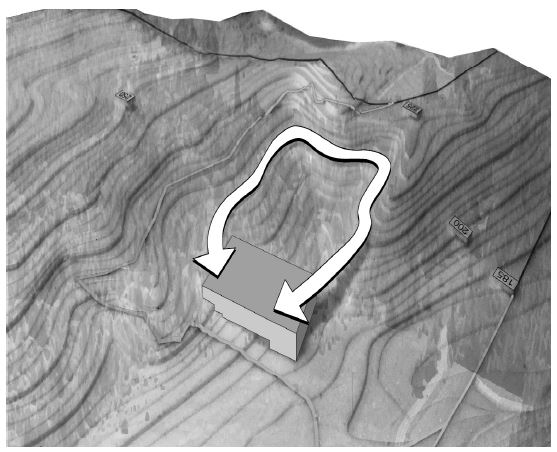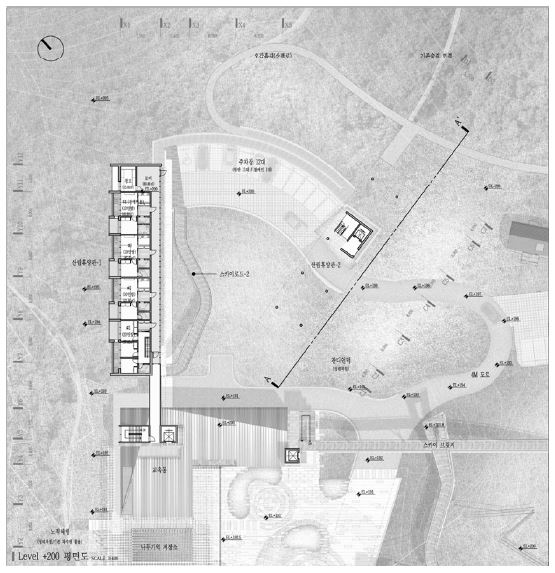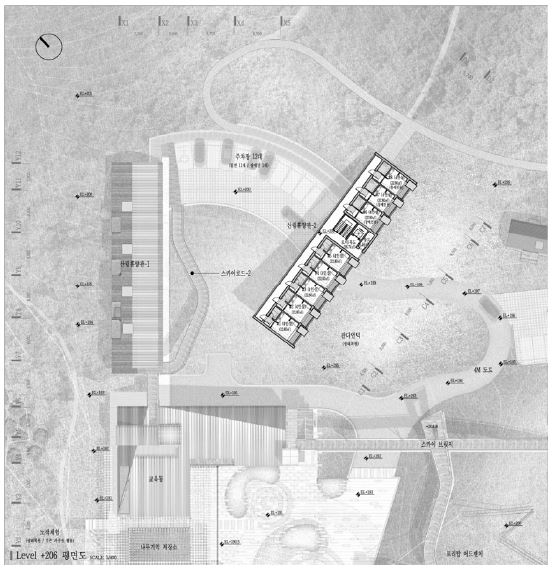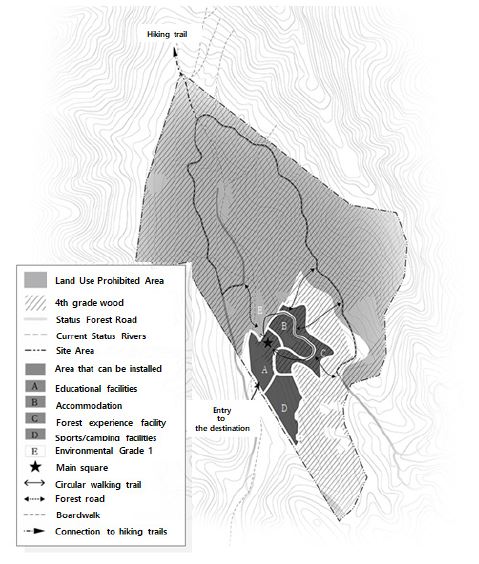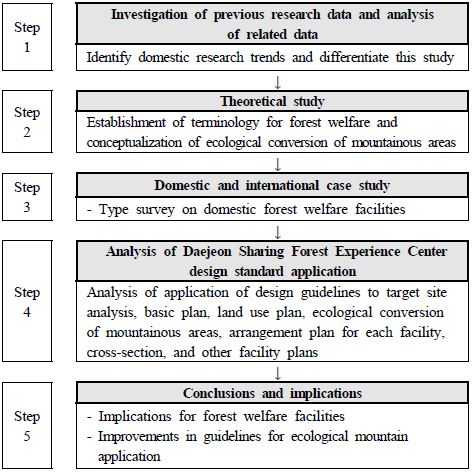
생태적 산지전용을 활용한 산림복지시설 조성 방안 연구 : 대전 나눔숲체험원 조성계획을 중심으로
ⓒ 2022. KIEAE all rights reserved.
Abstract
The desire to experience forests is increasing as urban residents have more leisure time due to increased income, the introduction of a five-day workweek, and economic leeway. The forms for forest welfare services are operated in the form of forest experience centers, forest kindergartens, forest campgrounds, and forest leisure sports facilities, and are created for the purpose of forest education and healing while serving as a local public goods.
This study will conduct a literature search within the last 5 years and research and organize terms and design guidelines through theoretical review. In addition, case studies are conducted, and the design content of the Daejeon Sharing Forest Experience Center is analyzed.
This study analyzes the “Daejeon Sharing Forest Experience Center Natural Recreation Forest Creation Plan” to which the concept of ecological mountain region conversion is applied, and proposes an alternative to the conservation of the forest environment and the space plan coexisting with humans in the creation of space using forest resources.
Keywords:
Forest Welfare, Forest Experience Center, Ecologically Sustainable Diversion of Mountainous Districts키워드:
산림복지, 숲 체험원, 생태적 산지전용1. 서론
1.1. 연구의 배경 및 목적
우리나라 국토의 65%가 산림으로 차지하고 있고 1960년까지 황폐화되었던 산림자원은 1973년부터 시행한 녹화 사업으로 인해 완전하게 회복되었다. 도시민들의 소득 증대와 주 5일 근무제의 도입, 경제적인 여유 등으로 여가 시간이 많아지면서 숲에 대한 관심과 경험하고자 하는 욕구가 증가되고 있다. 생활권을 중심으로 건강한 휴양 활동을 위한 숲 접근권의 개념이 생기기 시작했다.
산림 생태계를 보존하고 양호한 생태계 자원을 도시민들에게 제공하는 산림 복지 서비스1) 개념이 다양한 형태에서 이루어지고 있으며, 이와 관련한 산림복지 정책들이 활발하게 제시되고 있다[1]. 산림복지 서비스를 위한 형태는 숲 체험원, 숲속 유치원, 숲속 야영장, 산림 레포츠 시설 등의 형태로 운영되고 있으며, 이러한 수요에 맞추어서 적절한 산림 활용에 대한 요구가 높아지고 있다. 도심의 숲은 지역의 공공재(public goods)[2]로서의 기능을 담당하면서 숲 교육과 치유 등의 목적으로 조성된다[3].
국내에는 「산지관리법」 이라는 법 제도로 산지 전용에 대한 관리를 하고 있으며, 산림의 경관, 생태, 재해 방지를 위한 2012년 「생태적 산지전용 제도」 를 운영하고 하고 있다.
「대전 나눔숲체험원 자연휴양림」 조성은 도시민들의 변화된 요구 맞게 삶의 질 향상에 기여하고, 도시 숲 이용객들의 건강 증뿐만 아니라 지역의 생태자원 보전과 육성에도 기여하기 위한 계획이다.
본 연구는 생태적 산지전용 개념이 적용된 「대전 나눔 숲 체험원 자연휴양림 조성계획」 을 분석함으로써 산림자원을 활용한 공간 조성에 있어서 산림 환경의 보전, 인간과 공존하는 공간 계획의 대안으로 제시하고자 한다.
1.2. 연구의 범위 및 방법
본 연구의 공간적 범위는 「대전 나눔숲체원 자연휴양림 조성」 사업을 대상으로 생태적 산지제도 적용한 설계형 연구를 진행할 것이다.
연구 진행에 있어서 (Table 1.)과 같이 다섯 단계로 진행된다. 우선, 최근 5년 이내 산림복지 인프라 구축을 주제로 수행한 연구를 중심으로 문헌 조사를 통해 본 연구와 차별화할 것이다.
두 번째는 산림복지 개념 및 생태적 산지전용에 대한 이론 고찰로 용어와 디자인 가이드라인을 조사 정리할 것이다.
세 번째 국내외 산림복지지설 사례 조사와 유형화로 현재 운용되고 있는 시설에 대해 분석한다.
네 번째는 생태적 산지전용 기법을 적용한 「대전 나눔 숲체험원」 대상지 분석, 기본계획, 토지이용계획, 생태적 산지전용, 시설별 배치계획, 단면도, 기타 시설물 계획에 대한 설계 내용 분석 진행한다.
마지막으로 결론 및 제도 개선에 대한 시사점을 제시한다.
1.3. 선행연구 검토
최근 5년간 산림복지 시설 및 생태적 산지전용 내용을 수행한 연구를 문헌 조사 활용해 조사해 보면 (Table 2.)과 같다. (Choi, 2022)은 괴산 산림복지단지 조성에 따른 인시 및 이용자의 요구분석에 대한 연구를 진행했다[4].
(Yeom, 2022)는 현재 시행 중인 산림복지 정책 현황에 대한 연구를 통해 정책에 활성화를 위한 연구를 진행했다[5]. 또한 (Lee, 2021)는 산림복지단지 조성 가이드라인을 제시했다[6]. (Kim, 2018)는 산림복지시설을 유형화하고 이용객들이 산촌 관광의 차별화에 대한 연구를 했다. (Table 2.)과 같이 대부분의 연구들이 산림복지시설에 대한 의식조사와 현제 운영되고 있는 프로그램에 대한 연구는 조사 되었다[7].
(Jeon, 2017)는 도시 숲 이용자들의 선호도를 조사하고 이들의 이용 형태와 산림복지 인식에 대해 파악하여 이후 시설 새롭게 제시할 프로그램 기초적 연구를 했다[8].
(Lee, 2016)는 경기도 내의 산림복지 시설에 대한 조사와 이를 휴양 벨트로 연결하는 정책 제언하는 연구를 하였다[9]. (Yeom, 2015)은 생애주기 개념을 도입한 산림복지시설에 도입 방안에 대한 제도 제언을 한 연구를 진행했다[10]. 최근 5년간 주요 연구를 조사한 결과 대부분의 연구들은 도입시설 용도, 인식조사 연구들이었으며, 생태적 산지 전용 연구는 전무한 것으로 조사되었다.
본 연구에서는 산림복지, 산림복지시설, 생태적 산지전용에 대해 정의하고 실제 조성된 「대전나눔숲체원 자연휴양림 조성」 사업에서 설계 단계에서 산림을 최소화 훼손하며 자연과 인간이 공존하는 설계 방법에 대한 시사점과 제언을 하는 것으로 차별화하려고 한다.
2. 이론고찰
2.1. 산림복지서비스의 개념
산림복지서비스란 출생에서부터 사망까지 전 생애주기에 걸쳐 숲 공간 안에서 숲태교, 유아 숲체원, 산림레포츠, 산림치유 등 다양한 환경과 프로그램 혜택을 지역민들에게 제공하는 것이다[11].
생애주기별 산림 복지서비스란 한정된 공간 내에서 산림자원서비스를 전 국민이 누리고, 특히 차별화된 생애주기별 프로그램을 통하여 산림 자원의 접근성이 떨어지는 소외계층의 차별을 줄이는데 목적을 두고 있다[12].
그뿐만 아니라 “산림복지 종합계획”에 나타난 생애주기 7단계인 탄생기, 유아기, 아동 및 청소년기, 중ㆍ장년기, 노년기, 희년기에 따라 14개의 산림복지 서비스를 제공하고 있으며 그에 따른 혜택을 누릴 수 있도록 체계적으로 지원하고 있다.(Table 3.)
2.2. 산림복지시설
산림복지시설이란 산림 복지서비스를 제공하기 위하여 조성된 시설을 의미하며, 이러한 서비스를 위한 시설로는 자연휴양림, 산림욕장, 치유의 숲, 숲길 유아 숲체험원, 산림교육센터 숲속야영장, 산림레포츠시설, 수목장림 등이 있다[13].
2.3. 생태적 산지전용
생태적 산지전용기준(제10조) 중 주요 배치, 건축물, 신재생 에너지 관련 가이드라인을 (Table 3.)에 정리했다[14].
배치계획에서 고려해야 할 내용에 있어서 원형 존치율이 60% 이상이어야 하며, 상지 전시 경계에서 30m의 수림대(樹林帶)를 존치 시켜야 한다는 점이다. 또한 기존의 지형과 식생을 유지해야 하고 산지 전용의 평균 경사도가 25% 이하여야 한다. 두 번째는 건축물 계획에 있어서 시뮬레이션을 통한 조망 분석과 산지경관 훼손 대책을 수립해야 하고 자연과 어울리는 색채 계획, 건축물의 높이를 16m 이하로 계획되어야 하고 건물의 길이는 대각적 기준 20m 이하, 직교 배치에 경우 35m 이하로 계획해야 한다. 경사지에 배치를 할 경우 산지ㆍ구릉지의 스카이라인 등 특정적인 경관 요소를 최대한 보전하며, 계단식 산지 전용을 통해 녹지 훼손을 최소화해야 한다.
마지막으로 탄소 배출 에너지 사용 최소화를 위한 친환경 가이드라인으로 산림바이오매스, 태양열ㆍ지열 에너지 등의 재생에너지를 이용하여 냉ㆍ난방을 적용해야 한다. 건축물 조성 시 내화목재(耐火木材)ㆍ흙ㆍ석재 등 친환경 재료를 사용해야 하며, 자연채광을 최대화할 수 있도록 건축물 배치 및 디자인을 고려해야 한다.(Table 4.)
3. 산림복지시설의 사례 조사 및 유형 분석
3.1. 산림복지시설 유형
산림복지시설의 유형 중 숲 체험원으로 (Table 5.)와 같이 구성된다. 횡성 숲체원은 강원도 횡성군 둔내면 청태산로 777에 위치하고 있으며 청태산 산맥에 132.742㎡ 부지 면적을 갖고 있으며 목조 건축물의 연면적은 6,904,27㎡, 건축면적은 4,471,55㎡, 지상 2층으로 구성되었다. 주요 시설은 친환경 목조 주택으로 총 52실의 객실과 문화활동 및 이벤트를 즐길 수 있는 250석 규모의 대강당, 교육공간, 체험공간, 방문자 센터, 숲속휴게소, 식당, 매점 등의 편의시설 뿐 아니라 생태학습장과 숲탐방로, 등산로 등의 숲체험 시설과 공간이 마련되어 있다. 주요 이용객은 기업체 및 단체 뿐 아니라 학교, 동호인, 가족, 개인 등으로 다양하다[15].
또한, 도시 지역의 거주하는 청소년들이 가까운 곳에서 숲과 나무에 대해 체계적인 숲체험 교육을 제공받을 수 있는 공간과 프로그램으로 구성되어있다.
양평 산음자연휴양림은 경기도 양평군 단월면 고북길 347에 위치하고 있으며, 소리산과 용문산이 위치하고 주변 지역에 천년고찰인 용문사, 용각암, 장군약수, 마당바위 등의 다양한 볼거리가 산재되어 있다. 뿐만 아니라 원시림과 자연계곡을 통해 자연 그대로의 모습을 체험하고 교육이 가능한 곳이다. 또한, 이 휴양림 계곡을 따라 인공 조림한 낙엽송, 잣나무 숲과 참나무, 층층나무, 단풍나무 등 원시림으로서 산림이 울창하게 우거져 있을 뿐만 아니라 오염되지 않은 맑은 계곡과 다양한 동ㆍ식물이 살아 숨 쉬고 있는 자연 그대로 모습이 보존되어 있어 숲 체험과 교육이 가능한 곳이다.
덕유산자연휴양림[16]은 덕유산 국립공원의 인접지역으로 무주구천동 계곡 입구로부터 4㎞ 지점에 위치하고 있으며, 낙엽송, 잣나무 등이 울창하고 주변 경관이 수려하여 쉼터의 휴식 공간으로서의 최적의 입지로 인근 지역에 무주리조트, 덕유산 국립공원, 나제통문, 태권도원, 무주양수발전소, 적산산성 등 관광명소 등이 입지하고 있어 계절과 상관없이 이용 가능한 곳이다. 주요 시설로는 숙박시설 및 100명을 수용할 수 있는 야영장과 178명의 수용인원을 갖춘 산림 문화휴양관과 숲속의 집이 있다. 또한 취사장, 샤워장 등이 마련되어 있으며 산책로, 삼림욕장, 잔디광장 등의 다양한 편의시설도 갖추고 있다.(Table 5.)
4. 생태적 산지전용지침 적용 분석
4.1. 사업개요
「대전 나눔 숲체험원」 조성사업의 개요에 있어서 전체 지구면적은 330,000㎡이고 용도지역은 자연녹지지역, 개발제한구역, 보존산지, 자연휴양림이다.(Table 6.)
이번 사업은 전체 면적 중 3,000㎡ 미만 산지전용을 진행했다. 또한 연면적은 개발제한구역 내 개발 면적이 3,000㎡ 이하로 해야 함으로 2,994.95㎡로 신지전용을 진행했다. 또한, 주요 시설은 해뜰마당, 교육관동, 실내집회장, 행정동, 산림휴양관, 숙박시설, 숲속 산책로로 구성되어있다.
4.2. 생태적 산지전용 현황 분석
본 사업 대상지에 생태적 산지전용 현황분석은 생태적 산지 적용 지침에 따라 세가 가지 방향을 세웠다. 우선 대상지 분석을 (Fig. 2.∼7.)와 같이 분석했다. 이후 개발제한구역 지역 내에 위치하고 있지만 민간인 경작지로 이미 훼손이 된 곳을 포함하고 있어 이곳에 도입시설을 최대한 훼손지에 배치시켜 기존 자연 지형을 최소화한 훼손 계획을 계획한다.
또한 (Fig. 2.∼7.)과 같이 기존 자연조건을 고려하여 인위적 변형을 최소화하여 주변 경관과 조화되는 것을 기본 전제로 고려되어야 하고 특히, 신갈 나무군락, 소나무 군락 등의 침엽수 및 활엽수 중에서 우량 수종은 가급적 존치시켜야 한다.
두 번째로 건축물은 부지 훼손을 최소화하여 자연친화적인 부지조성과 건축공사 공정을 최소화하는 피로티 구조 등을 적용하여 지형 훼손을 최소화하는 공법을 적용하며, 절ㆍ성토량과 법면 때문에 토목 공사량이 과해지는 것보다 환경친화적 공법인 건식공법 등 자연친화적 시설 계획(절ㆍ성토면 식재 및 자연석 처리)를 해야 한다.
마지막으로 지역의 입지여건, 자연자원, 인문사회 환경 등을 고려하여 고유한 자연환경이 유지ㆍ보전ㆍ특색 있는 휴양림이 되도록 설계해야 한다.
4.3. 숲 접근권 강화
대상 지역은 지형의 높이 차이와 경사도로 인하여 울창한 숲까지 접근하기가 쉽지 않다. 높은 지점의 울창한 숲까지 보행약자가 쉽게 접근하고, ‘깊은 숲 자락’을 따라 설치된 ‘평평한’ 산책로를 거닐 수 있는 환경을 조성하여 보행약자의 숲 접근권을 보장했다.(Fig. 8.)
건축물과 보행교의 적절한 조합으로 울창한 숲으로의 접근이 가능해졌으며, 울창한 숲은 관망의 대상을 넘어서, 직접 체험하는 자연자원이 된다는 점이다. 특히, 이 산책로는 자연휴양림을 대표하는 시설로 볼 수 있으며, 건물의 수직 동선으로 진입한 후, 건물 옥상을 경유하여 순환형 산책로 진입한다. 계곡부에는 ‘말밥굽 형’으로 형성되는 「동일한 레벨의 동」 이, ‘순환형 산책로’가 될 수 있도록 건축물 배치했다. 이 건물은 ‘순환형 산책로’의 기점 역할을 할 것이며, 식당과 같은 편의시설에 접근이 가능하다.
4.4. 토지이용계획
본 계획에서 토지이용을 계획하기 위해 생태적 산지전용 지침을 고려한 산림보존과 숲접근권을 위한 토지이용계획 및 주변 환경을 고려한 가용지 내(內)활을 통한 효율적인 용도 배분을 고려한 목표를 갖고 있다. 이를 위해 우선 기존 지형을 (Fig. 2.∼7.)에 분석한 대상지 분석한 내용을 바탕으로 기존 지형의 훼손 최소화하기 위한 생태자연도 1등급 및 환경평가등급 1등급을 제외한 조성 가용지의 범위를 설정 했다.
지역의 입지여건, 자연자원, 인문사회 환경 등을 고려하여 고유한 자연환경이 유지ㆍ보전ㆍ특색 있는 체험원이 되도록 했으며, 자연적 조건을 고려하여 인위적 변형을 최소화하여 주변 경관과 조화되는 것을 기본 전제로 계획했다. 산림 접근성 확보하기 위해 진입로 주변 산림현황, 지형 등을 고려한 토지이용계획을 수립하여 산림은 최대한 보존하고, 이용객이 숲과 접촉할 수 있는 기회를 다양화 제공해 주는 계획을 했다.
마지막으로 (Fig. 9.)와 같이 효율적인 용도 배분을 위해 광장에서의 개별 접근이 가능하도록, 광장을 중심으로 ‘교육 시설군’을 배치할 수 있도록 하고 숙박시설의 특성에 맞도록 유형별로 배치할 수 있는 토지용을 구성했다. 토지이용계획에 있어서 자연 지형을 고려 훼손을 최소화, 적합한 시설 배치를 할 수 있는 토지이용을 구성했다.
4.5. 시설계획 생태적 산지 전용 지침 적용 분석
본 「대전 나눔 숲체험원 조성사업」 의 주요시설의 배치는 주변 생태계와 잘 조화를 이루도록 배치하도록 할 계획이며, 숙박시설, 편익시설, 위생시설, 체험ㆍ교육시설, 산림보전지역으로 계획하였다.
시설물 배치계획에 있어서 기본방향으로 우선 대상지의 부지여건과 지구별 접근체계, 기존 도로 및 계획도로 등은 최소 원칙으로 하며 자연의 생태환경 및 경관 훼손을 최소화할 수 있도록 구체적으로 계획했으며, 시설 배치는 지구 구분과 입지 및 기능의 상관성을 고려하여 유기적인 연계에 의해 시설의 이용 효율성을 높이도록 적재적소(適材適所)의 원칙으로 과도한 시설물 배치가 이루어지지 않게 계획했다.(Table 7.)
또한 개발여건 분석 및 기본 구상에 부합되는 시설 관련 배치계획을 수립하되 도입시설 및 지형 특성을 고려하여 인간 척도를 기준으로 소요 공간별, 기능적, 미적 요소 등을 충족시키도록 했다. 도입시설규모는 계획지표 및 이용자에 의거하여 계획하되 시설별 개발 방향 또는 특성에 따라 배치하고 생태적 산지전용 지침(Table 4.)에 근거, 본 시설물은 주변 환경과 조화될 수 있도록 형태, 색채, 건축물의 질감 등을 고려하여 휴양객들이 이용하기에 편리하도록 계획했다.
본 이용자 측면에서 다양한 이용계층을 수용할 수 있는 적극적인 시설 배치와 기존 지형을 이용한 배치로 토지의 효율성을 최대한 높이도록 계획했으며, 산책로의 결절점이나 주요 지점에 쉼터 공간과 이정표를 배치하여 이용자들에게 편리한 휴식 공간을 제공하도록 했다.
교육 관동과 실내 집회장은 생태적 산지전용 지침에 따라 조망 분석 및 산지경관 영향 시뮬레이션을 실시하여 경관 훼손을 줄이고, 직사각형 대각선을 기준으로 20m 이하로 건축물의 길이가 제한되어 있기 때문에 실내집회장 행정동을 분리하여 계획했다. 또한 건축물의 높이는 16m를 초과하지 않아야 하므로 교육관동은 2개 층으로 구성되어있고 1층엔 세미나실과 식당, 2층은 교육실로 구성되어 최고 높이는 14.5m로 계획했다.
실내집회장 최대 400명을 수용하고 우천 시에도 교육 프로그램을 대체하도록 이용이 가능하다. 두 시설은 일시적 이용 인원이 많은 용도는 진입구 가까운 쪽에 배치하여, 또한 두 시설은 기존에 훼손지에 배치를 했으며 산림 훼손 최소화하는 생태적 산지전용 지침에 맞도록 계획했다.(Fig. 12., Table 7.)
숙박시설은 산림휴양관 2동과 숲속의 집 7동으로 구성되어있으며, 기존 묘지 터가 있는 곳을 중심으로 훼손된 지역과 경사도가 다소 원만한 곳에 배치했다. 산림 휴양관은 기존 자연환경 훼손을 최소화하여 자연 친화적인 부지조성과 건축공사 공정을 최소화하는 필로티 구조 등을 적용하여 지형 훼손을 최소화하는 공법으로 계획되었다. 숲속의 집은 기존의 지형과 식생을 유지하면서 시설물을 설치했으며, 평균 경사도는 25도 이하인 곳에 지형에 따라 배치했다.(Table 7.) 건축물의 색채는 주변 산림의 조화를 이룰 수 있도록 목재를 활용하여 계획했다.(Fig. 10., Fig. 11., Fig. 12.)
5. 결론
본 연구는 산림복지시설이면서, 생태적 산지전용 제도를 적용한 「대전 나눔 숲 체험원」 조성 사업에 대한 설계형 연구를 진행했으며, 이 연구의 프로세스를 다섯 단계로 진행했다. 우선 최근 5년 이내에 산림복지시설과 관련된 연구를 조사한 결과 대부분의 연구들이 산림복지시설에 대한 프로그램 발굴에 대한 연구들이었으며 본 연구와 같이 생태적 산지 적용에 관한 연구는 없는 것으로 조사되었고 이를 타 연구와의 차별화할 수 있었다. 두 번째로 이론적 고찰을 통해 산림복지와 산림복지시설, 생애주기별 산림복지시설, 생태적 산지전용에 대한 지침을 개념을 정립했으며, 세 번째로 국내 사례조사로 횡성 숲 체험원과 양평 산음 자연휴양림, 덕유산 자연휴양림 등 국내 숲 체험원에 대한 사례를 조사했다. 네 번째는 대전 숲체험 계획에 있어서 산지전용에 있어서 사업 범위를 생태적 산지적용 지침에 대한 지침을 반영과 숲 접근권에 대한 기본구상 방안에 대해 구상을 구성했으며, 생태적 산지적용 지침에 따른 토지이용계획과 배치계획, 건축물에 대한 계획안을 계획되었다.
마지막으로 생태적 산지적용에 있어서 다음과 같은 개선점을 제시하려고 한다.
첫 번째는 건축물 계획에 있어서 세부적인 경관과 생태적 관점에서의 건축물의 전용을 제한하는 구체적 규정제시가 필요하다.
두 번째는 도시계획법과 건축법 적용에 있어서와 같이 본 지침이 보다 제한하는 형태로 접근에 대한 구체적이면서 명확한 가이드라인이 필요하다.
세 번째는 산지전용 허가에서 산지전용의 허가 행정 처리 이후 산지의 개발 및 관리 기능과는 연계성은 미비하다(개별법의 개발기준에 의해 개발). 즉 산지전용과 개발ㆍ관리와의 연계성 미비하다. 현재 단순한 허가조건의 충족여부에서 벗어나 허가기준을 강화하여 운영하는 것이 필요하다.
마지막으로 '산지전용허가기준의 세부검토 기준에 관한 규정'에서는 사업별ㆍ규모별 구체적인 세부기준 및 적용범위를 제시하고 있으나, 면적 관련 백분율, 경사도 등에만 초점을 두고 규정하고 있는 것이 한계로 나타났다.
이번 연구를 통해 산림 개발에 있어서 훼손을 최소화할 수 있는 방법이 있음에도 불구하고 개발행위 등에 대한 생태적 산지전용 지침 적용이 매우 제한적인 한계점이 있음을 증명하게 되었다. 추후 본 연구를 통해 현재 운영되고 있는 생태적 산지전용 제도에 명확한 가이드라인을 보완하고 현 법제도 문제점을 통한 개선방안 및 타 제도의 연계 운영 등에 대한 연구를 진행하고자 한다.
References
-
권오상, 가상순위결정법을 이용한 자연생태계의 경제적가치평가, 경제학 연구, 제48권 제3호, 2000, pp.177-196.
O.S. Kwon, S.H. Kim, Evaluating the economic value of natural ecosystems using virtual ranking method, 48(3), 2000, pp.177-196. -
김재준 외 4인, 산림의 공익적 기능의 계량화, 산림경제연구, 제2권 제1호, 1994, pp.127-139.
J.J. Kim et al., Quantification of forests' public service functions, Forest Economic Research, 2(1), 1994, pp.127-139. -
변재상, 윤희정, 김인호, 학교숲 이용실태 및 성과 분석, 한국조경학회지, 제36권 제1호, 2008, pp.49-61.
J.S. Byun, J.S. Yoon, I.H. Kim, Analysis of the usage status and performance of the school forest, Journal of the Korean Institute of Landscape Architecture, 36(1), 2008, pp.49-61. -
최순남, 시청섭, 괴산 산림복지단지조성에 따른 인식 및 요구분석에 대한 연구, 한국산림휴양학회지, 제26권 제1호, 2022, pp.39-51.
S.N. Choi, C.S. Shin, A study on awareness and demand analysis according to the creation of Goesan Forest Welfare Complex, Korean Institute of Forest Recreation and Welfare, 26(1), 2022, pp.39-51. -
염동걸 외 4인, 한국 산림복지 정책의 특성 및 활성화 방안 연구: Gilbert & Terrell의 분석틀을 중심으로, 한국산림휴양복지학회, 제16권 제1호, 2022, p.16.
D. G. Yeom et al., A Study on the forest welfare policies in Republic of Korea: Focusing on the analysis framework of Gilbert and Terrell, Korean Institute of Forest Recreation and Welfare, 16(1), 2022, p.16. -
이정희 외 5인, 산림복지단지 조성 가이드라인, 국립산림과학원, 2021, p.81.
J.H. Lee et al., Guidelines for the creation of forest welfare complexes, National Institute of Forest Science, 2021, p.81. -
김예지, 김성학, 서정원, 산림복지시설 이용객의 산촌관광 선호 행태 분석, 한국산림휴양학회지, 제22권 제1호, 2018, pp.35-47.
Y.J. Kim, S.H. Kim, J.W. Seo, An analysis on the preferred behavior of mountain village tourism for users in forest welfare facilities, Journal of the Korean Forest Recreation Society, 22(1), 2018, pp.35-47. [ https://doi.org/10.34272/forest.2018.22.1.004 ]
-
전보배, 도시숲의 산립복지서비스에 대한 이용자 인식 분석, 전북대학교 일반대학원, 2017, pp.33-55.
B.B. Jeon, Study on users' perception for forest welfare service of urban forest, The Graduate School of Chonbuk National University, 2017, pp.33-55. -
이양주 외 3인, 경기도 산림복지 휴양벨트 여건 분석 및 조성방향, 경기연구원, 2016, p.190.
Y.J. Lee et al., An analysis of current conditions for developing Gyeonggi-Do forest welfare and recreation belt and its directions, Gyeonggi Research Institute, 2016, p.190. -
염동길, 생애주기별 산림복지시설의 특성분석 및 프로그램 내용구성에 관한 연구, 충남대학교 대학원, 2015, pp.17-38.
D.G. Yeom, An analysis of current conditions for developing Gyeonggi-Do forest welfare and recreation belt and its directions, Chungnam National University Graduate School, 2015, pp.17-38. -
구자춘, 안현진, 변승연, 산림복지서비스 전달체계개선방안, 한국농촌경제연구원, 2021.
J.C. Koo, H. J. Ahn, S. Y. Byun, Ways of improving the delivery system of Korean forestwelfare services, Korea Rural Economic Institute, 2021. -
이정희 외 5인, 전국민 산림복지서비스 이용 현황과 전망, 국립산림과학원, 2016.
J. H. Lee et al., Status and Prospect of National Forest Welfare Service Use, National Institute of Forest Science, 2021. -
산림청, 산림복지지구 및 산림복지단지 조성·운영 매뉴얼, 2018.
Korea Forest Service, Forest welfare zone and forest welfare complex creation and operation manual, 2021. -
법제처 국가법령센터, https://www.law.go.kr, /, 2022.09.21.
Ministry of Justice National Law Center, https://www.law.go.kr, /, 2022.09.21. -
국립횡성숲체원, https://hoengseong.fowi.or.kr, /, 2022.09.21.
Forest Administration Hoengseong Forest Experience Center, https://hoengseong.fowi.or.kr, /, 2022.09.21. -
양평산음자연휴양림, https://www.foresttrip.go.kr, /, 2022.09.21.
National Forest Service National Saneum Recreational Forest, https://www.foresttrip.go.kr, /, 2022.09.21.

